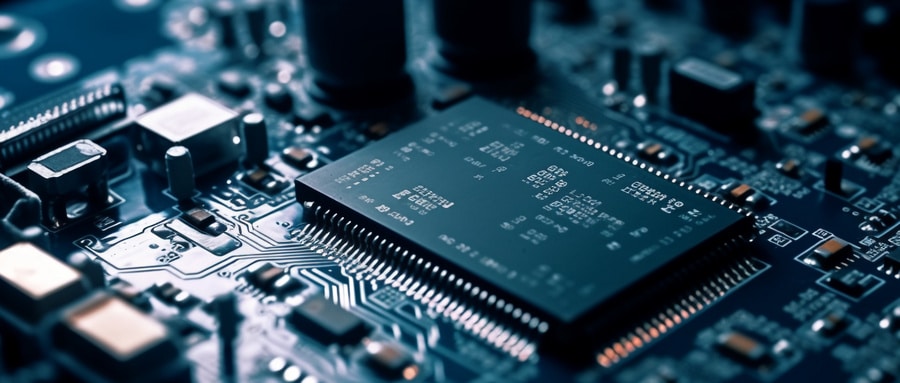The New Era of Electronics: Exploring the Power of Alumina PCB
As technology increasingly permeates every facet of our daily lives, the quest for innovation continues unabated. Alumina PCB stands as an innovative milestone in electronics. This article seeks to bring greater light on its benefits, working principles, manufacturing processes and applications; future prospects as well as any possible limitations or restrictions it might present.
Alumina PCBs are ceramic PCBs widely utilized due to their exceptional electrical insulation properties, thermal conductivity, and excellent mechanical strength. Alumina boards offer the perfect solution for applications involving high temperatures or that have stringent insulation requirements.
Understanding the advantages of Alumina PCBs is of vital importance. Their primary advantage is their ability to withstand high operating temperatures, making them especially helpful in hostile environments. They’re also dimensional stable and wear-resistant – evidence of their high mechanical strength – while their excellent electrical insulation properties make them suitable for high frequency devices that rely heavily on electrical insulation properties.
Let’s delve deeper into the manufacturing process for Alumina PCBs. Starting with high purity alumina powder, multiple stages such as compaction, sintering and drilling are followed to produce top quality boards.
Alumina PCBs are extremely flexible in their applications. They’re commonly seen across industries such as automotive, military and aerospace, LED lighting and even communication devices – particularly LED lighting where their high thermal conductivity helps dissipate heat quickly, thus increasing lifespan of LED bulbs.
Now is the time to look ahead at Alumina PCBs. As technology continues to advance, demand for Alumina PCBs should increase substantially across various sectors – especially high-power electronic devices, hybrid vehicles and renewable energy – where superior thermal conductivity and electrical insulation properties are necessary.

Conclusion Alumina PCBs are revolutionizing the electronics industry through their superior attributes. Although this exploration does not aim to cover everything about Alumina PCBs, it does provide a solid basis for understanding their relevance and impact in our tech-driven society.
Adopting and adapting to innovations like Alumina PCBs will be crucial in leading us to a more efficient and sustainable technological future.
Alumina PCB FAQ:
- Q: What is Alumina Printed Circuit Board?
A: Alumina Printed Circuit Board is a type of printed circuit board that uses alumina, or aluminum oxide, as the base material. It’s highly durable, non-conductive, and resistant to high temperatures, making it ideal for high-power and high-frequency applications. - Q: What are the advantages of Alumina Printed Circuit Boards?
A: Alumina Printed Circuit Boards offer high thermal conductivity, excellent electrical insulation, high mechanical strength, and resistance to chemical attack. They also sustain high temperatures which makes them suitable for high-power applications. - Q: In what applications are Alumina Printed Circuit Boards typically used?
A: Alumina Printed Circuit Boards are widely used in power electronics, communications, aerospace, and medical equipment due to their exceptional thermal and mechanical properties. - Q: How is an Alumina Printed Circuit Board made?
A: Alumina Printed Circuit Board manufacturing process is similar to conventional Printed Circuit Boards, except alumina ceramic is used as the base material. The circuit pattern is then printed and etched onto this base using chemical methods. - Q: Are Alumina Printed Circuit Board more expensive than traditional Printed Circuit Boards?
A: Yes, Alumina Printed Circuit Boards are typically more expensive due to the high cost of the alumina ceramic material and the specialized processes required to manufacture them. - Q: How does the performance of Alumina Printed Circuit Boards compare to regular PCBs?
A: Alumina Printed Circuit Boards outperform regular PCBs in high frequency and high power applications due to their superior thermal conductivity and electrical insulation properties. - Q: What are the standard thicknesses of Alumina Printed Circuit Boards?
A: Standard thickness of Alumina Printed Circuit Boards ranges from 0.25 mm to 1.0 mm. However, custom thickness can be made as per the requirement. - Q: Can Alumina Printed Circuit Boards be multi-layered like regular PCBs?
A: Yes, multi-layer Alumina Printed Circuit Boards can be made, though they are more complex and costly to manufacture. - Q: How do I clean an Alumina Printed Circuit Board?
A: Alumina Printed Circuit Boards can be cleaned with a mild detergent and then thoroughly dried. They should not be scrubbed or cleaned with abrasive materials to prevent damage to the circuit pattern. - Q: Are Alumina Printed Circuit Boards environmentally friendly?
A: Yes, Alumina Printed Circuit Boards are environmentally friendly as alumina is a non-toxic material and can be safely disposed of or recycled.























